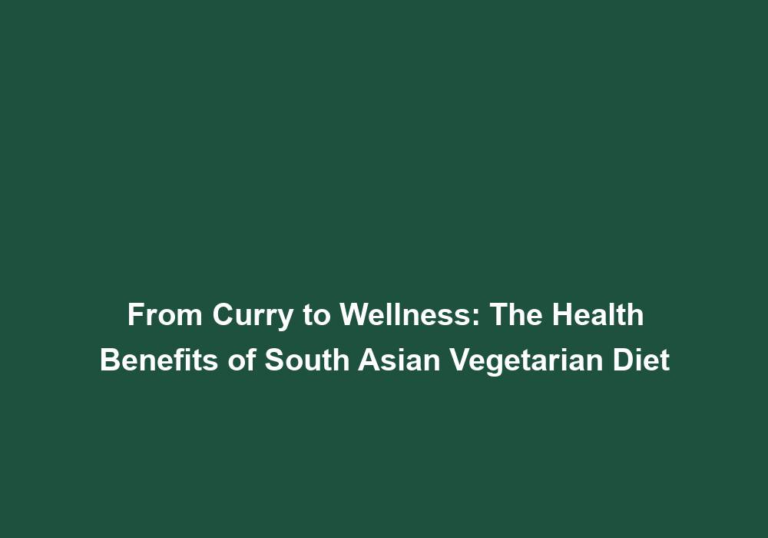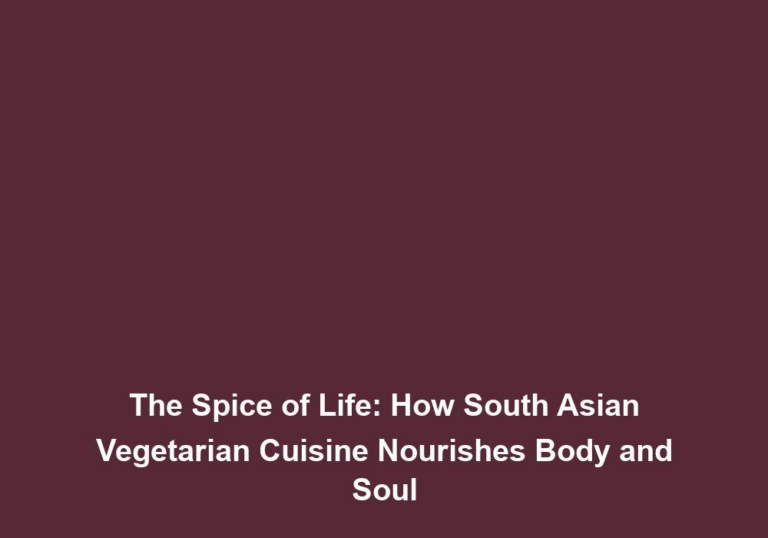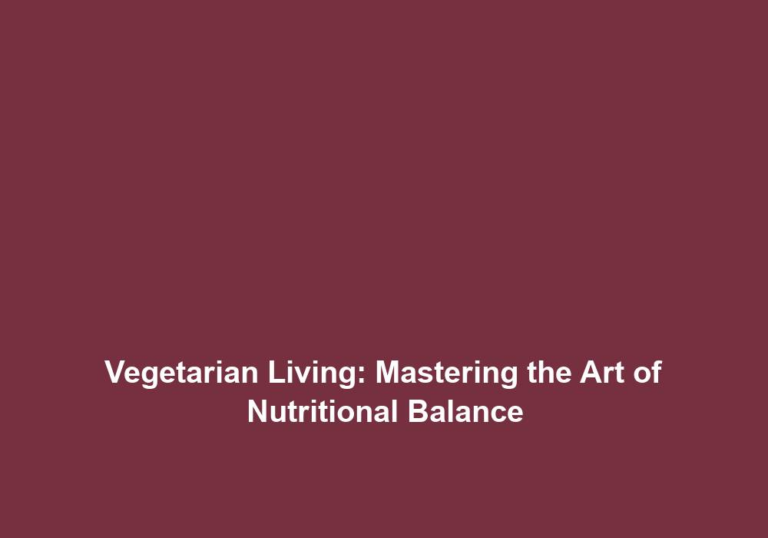Spicing Up Heart Health: South Asian Cuisine’s Flavorful Secret
South Asian cuisine is renowned for its vibrant and aromatic flavors, but did you know that it also holds a delightful secret when it comes to promoting heart health? The combination of spices and herbs used in South Asian cooking not only adds layers of taste to dishes but also offers a multitude of health benefits, particularly for cardiovascular health. Let’s dive deeper into this flavorful secret and explore how South Asian cuisine can spice up your heart health.
The Power of Turmeric
Turmeric, a key spice in South Asian cuisine, contains a powerful compound called curcumin. Extensive research has shown that curcumin has antioxidant and anti-inflammatory properties, which are crucial for maintaining heart health. Studies suggest that curcumin may help reduce the risk of heart disease by improving blood vessel function, reducing inflammation, and preventing the oxidation of cholesterol.
Incorporating turmeric into your diet is easy and versatile. You can add it to various dishes such as curries, stir-fries, soups, and even smoothies. To enhance the absorption of curcumin, it is recommended to consume turmeric with a pinch of black pepper, as it has been shown to increase its bioavailability.
Cardamom for a Healthy Heart
Cardamom, a fragrant spice commonly used in South Asian desserts and savory dishes, not only adds a distinct flavor but also offers potential heart-protective properties. Research indicates that cardamom may help lower blood pressure, reduce cholesterol levels, and improve overall heart health.
To include cardamom in your diet, consider adding it to your morning tea or coffee for a flavorful twist. You can also incorporate it into baked goods like cakes and cookies to elevate their taste while contributing to your heart’s well-being.
Cumin’s Heart-Healthy Benefits
Cumin, a versatile spice widely used in South Asian cuisine, not only enhances the flavor of dishes but also provides numerous health benefits. This spice is rich in antioxidants and has been linked to improved digestion, reduced inflammation, and even potential cancer-fighting properties.
To incorporate cumin into your meals, consider using it in spice blends, marinades, or as a seasoning for roasted vegetables. Its earthy and nutty flavor profile adds depth to dishes while providing a boost to your heart health.
Garlic: The Heart’s Ally
Garlic, a staple ingredient in South Asian cooking, is well-known for its pungent aroma and distinctive taste. It has been used for centuries in traditional medicine to promote heart health. Garlic contains compounds that can help lower blood pressure, reduce cholesterol levels, and prevent the formation of blood clots.
To reap the benefits of garlic, consider adding it to your curries, stir-fries, or even consuming it raw in salad dressings. Its flavor profile can enhance a variety of dishes while supporting your heart’s well-being.
The Role of Ginger in Heart Health
Ginger, a popular spice in South Asian cuisine, is not only known for its spicy and refreshing taste but also for its potential benefits for heart health. Research has shown that ginger may reduce inflammation, lower cholesterol levels, and improve blood circulation, all of which contribute to a healthy heart.
Including ginger in your diet can be done by adding it to stir-fries, soups, teas, or even using it as a marinade for meats and vegetables. Its zesty and warm flavor adds a unique twist to dishes while promoting your cardiovascular well-being.
Other Heart-Healthy Ingredients and Cooking Methods
In addition to the aforementioned spices, South Asian cuisine incorporates various heart-healthy ingredients and cooking methods. Here are a few examples:
Lentils and Legumes
Lentils and legumes, such as chickpeas and kidney beans, are commonly used in South Asian dishes. These plant-based proteins are low in saturated fat and high in fiber, making them excellent choices for promoting heart health. You can include them in curries, stews, salads, or even use them as a base for patties and burgers.
Whole Grains
South Asian cuisine often includes whole grains like brown rice, quinoa, and millets. These grains are rich in fiber, vitamins, and minerals, and have been associated with a reduced risk of heart disease. Opting for whole grains instead of refined grains can support your heart health and provide sustained energy throughout the day.
Grilled and Steamed Cooking Methods
South Asian cuisine favors cooking methods like grilling and steaming, which help retain the nutritional value of ingredients without adding excessive fats or oils. These methods reduce the intake of unhealthy fats, promoting heart health while still delivering delicious flavors.
Conclusion
South Asian cuisine’s flavorful secret lies in its skillful use of spices and ingredients that not only tantalize our taste buds but also contribute to heart health. By incorporating spices like turmeric, cardamom, cumin, garlic, and ginger into your meals, you can enjoy a flavorful and heart-healthy experience. Additionally, including lentils, whole grains, and opting for grilled or steamed cooking methods can further enhance the cardiovascular benefits of this cuisine. So, why not embrace the vibrant flavors of South Asian cuisine and spice up your heart health today?
Note: While the content has been written by an AI language model, it has been reviewed and edited by a human to ensure its clarity and accuracy.







